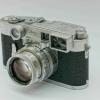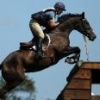My Article On The Leica Summar
-
Recently Browsing 0 members
- No registered users viewing this page.
-
Similar Content
-
- 7 replies
- 432 views
-
- 15 replies
- 456 views
-
- 2 replies
- 362 views
-
12cm f/4.5 Summar 1 2
By pgk,
- 37 replies
- 4,854 views
-
- 9 replies
- 838 views
-




Recommended Posts
Join the conversation
You can post now and register later. If you have an account, sign in now to post with your account.
Note: Your post will require moderator approval before it will be visible.